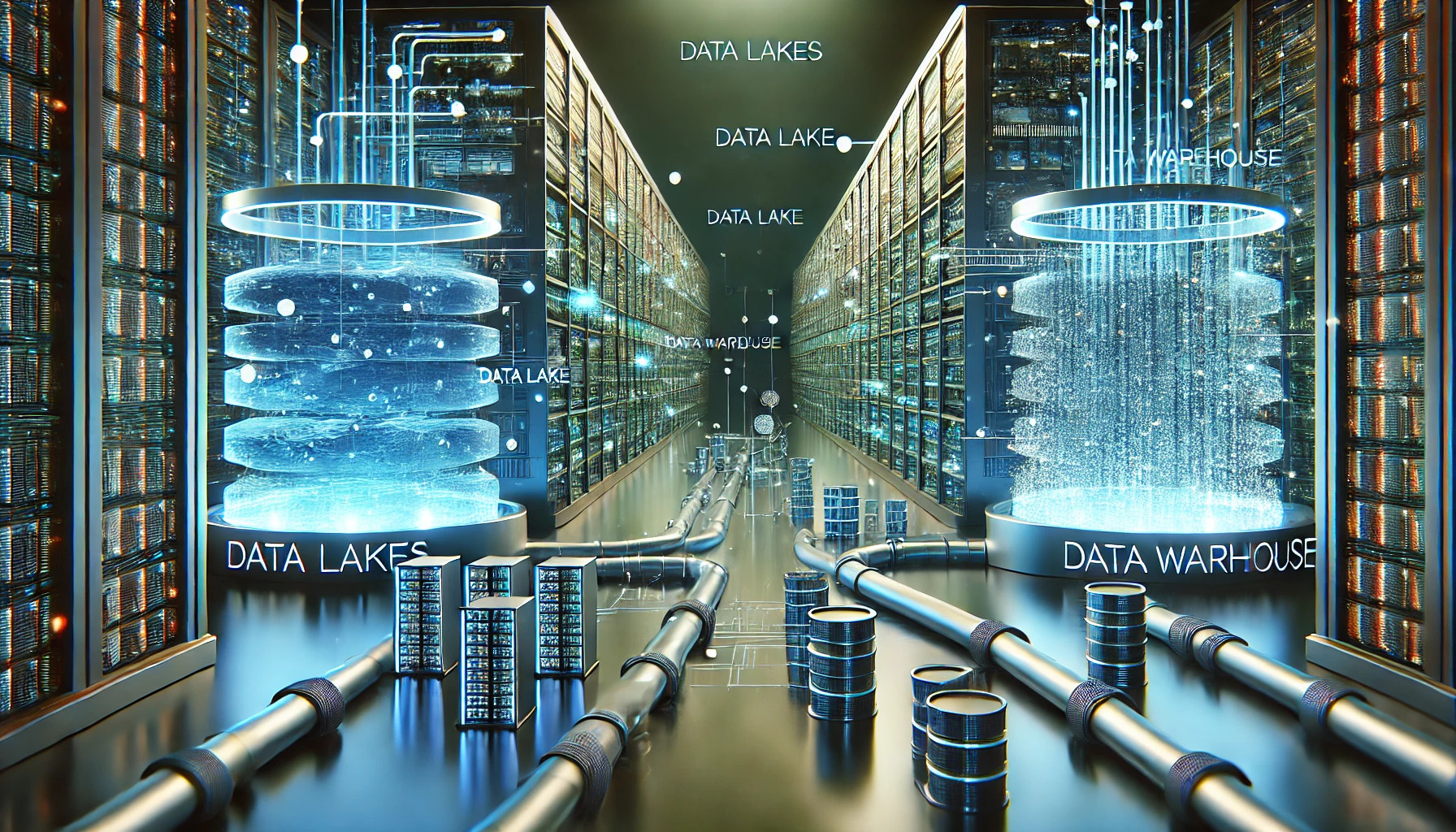Introduction
In today’s data-driven world, businesses generate massive amounts of information daily. Efficiently storing, managing, and analyzing this data is critical for making informed decisions. Data lakes and data warehouses serve as two key components in modern Big Data architecture, each with distinct roles in handling structured and unstructured data.
Understanding Data Lakes
A data lake is a centralized repository that stores raw, unstructured, semi-structured, and structured data at any scale. Unlike traditional databases, data lakes allow businesses to store data in its native format, making it accessible for future use. Technologies such as Apache Hadoop, Amazon S3, and Azure Data Lake are commonly used for data lakes.

Benefits of Data Lakes
Scalability: Can store large volumes of diverse data.
Flexibility: No predefined schema is required, making it adaptable for different types of data.
Advanced Analytics: Supports AI, ML, and big data analytics.
Cost-Effective Storage: Cheaper compared to traditional databases.
Challenges of Data Lakes
Data Governance Issues: Without proper organization, data lakes can turn into “data swamps.”
Complexity in Data Retrieval: Retrieving meaningful insights requires advanced querying techniques.
Security Concerns: Managing access control in a vast data repository is challenging.
Understanding Data Warehouses
A data warehouse is a structured storage system optimized for analytics and reporting. Unlike data lakes, warehouses store data in a processed and structured format, making them ideal for business intelligence (BI) applications. Common data warehouse technologies include Amazon Redshift, Google BigQuery, and Snowflake.
Benefits of Data Warehouses
Optimized for Querying: Faster data retrieval and analytics.
High Data Quality: Data is cleaned, transformed, and structured before storage.
Business Intelligence Support: Integrates with BI tools like Tableau and Power BI.
Security & Compliance: Stronger access control and regulatory compliance.
Challenges of Data Warehouses
Costly Storage & Maintenance: More expensive compared to data lakes.
Limited Flexibility: Requires predefined schema, making it less adaptable to unstructured data.
ETL Overhead: Data must go through extract, transform, and load (ETL) processes before storage.
Data Lake vs. Data Warehouse: Key Differences
| Feature | Data Lake | Data Warehouse |
|---|---|---|
| Data Type | Structured, semi-structured, unstructured | Structured |
| Storage Cost | Low | High |
| Query Speed | Slower | Faster |
| Use Case | AI/ML, real-time analytics | Business intelligence, reporting |
| Schema | Schema-on-read | Schema-on-write |
How Data Lakes & Warehouses Work Together
Rather than choosing one over the other, modern enterprises are increasingly adopting a hybrid approach, integrating data lakes and warehouses for better data management.
Data Lake as a Raw Data Hub: All raw data is first ingested into a data lake.
Data Warehouse for Processed Data: Critical business data is cleaned, transformed, and moved into a data warehouse for easy querying and reporting.
ETL/ELT Pipelines: Tools like Apache Spark, AWS Glue, and Talend facilitate data movement between lakes and warehouses.
Conclusion
Data lakes and data warehouses each play a crucial role in modern Big Data architectures. While data lakes offer scalability and flexibility, data warehouses ensure performance and data integrity. By leveraging both, businesses can create a powerful data ecosystem, enabling real-time analytics, AI-driven insights, and better decision-making.
With evolving cloud technologies and data management best practices, companies can optimize their data strategies to harness the full potential of Big Data.